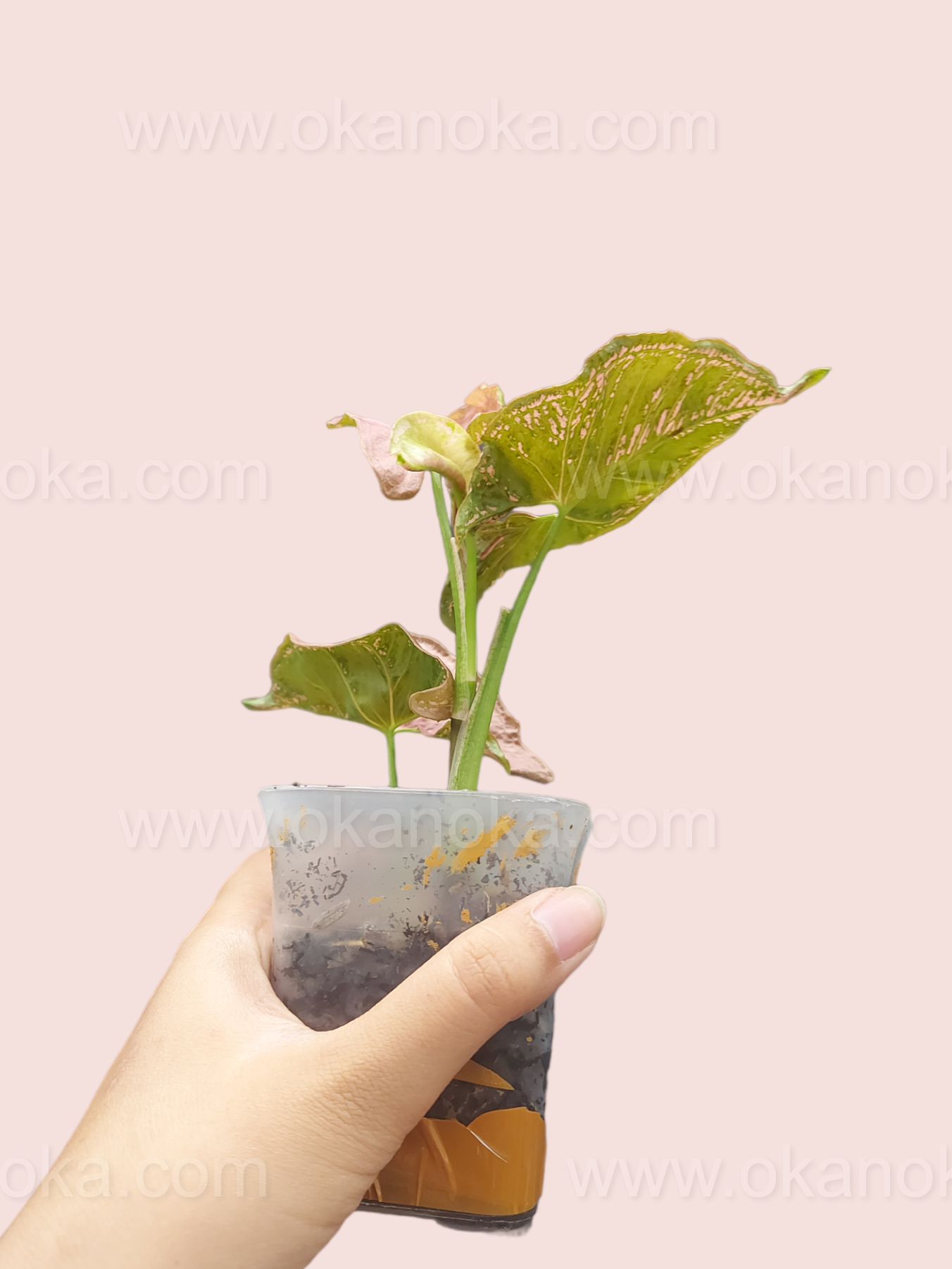1
/
of
4
Okanoka
Syngonium Mosaic
Syngonium Mosaic
Regular price
$20.00 USD
Regular price
Sale price
$20.00 USD
Unit price
/
per
Taxes included.
Shipping calculated at checkout.
No reviews
Couldn't load pickup availability
PLEASE READ OUR POLICY (IN TERMS & CONDITION SECTION) AND THE DESCRIPTION OF EVERY LISTING BEFORE PLACING YOUR ORDER
(Bonus plant for every purchase available)
Photo featured are references of the plants that will be shipped to you. Great shape and condition. Refer to the photo provided for sizes and forms.
What you can expect to receive:
a. Leaf: minimum of 3
b. Healthy plants
Syngonium Mosaic: A Beautiful Patterned Syngonium
The Syngonium Mosaic is a beautiful variety with unique green and cream variegation across its arrow-shaped leaves. This fast-growing plant brings a burst of texture and color to any space and is known for its easy care and versatility.
Why Syngonium Mosaic is So Popular
- Stunning Foliage: The mosaic-like variegation on the leaves creates a striking visual effect.
- Fast-Growing: A perfect choice for those who enjoy seeing rapid growth in their plants.
- Low Maintenance: Great for beginners due to its easy care needs and adaptability.
Caring for Your Syngonium Mosaic
- Light Needs: Prefers bright, indirect light for vibrant colors but can tolerate lower light.
- Watering Tips: Water when the top of the soil is dry. Ensure good drainage.
- Temperature & Humidity: Thrives in warm temperatures (65-80°F) and moderate humidity.
Aerial Roots and Growth Support
- Climbing Growth: As a vining plant, Syngonium Mosaic will produce aerial roots to help it grow.
- Support Tips: Use a moss pole or trellis to guide the plant upward.
Native Habitat and Environment
- Native to Central and South America: Found in tropical forests where it grows in shaded, humid environments.
- Original Habitat: Prefers filtered light and high moisture, mimicking its natural habitat.
Pests and Disease Prevention
- Common Pests: Watch for mealybugs, aphids, and spider mites.
- Disease Prevention: Avoid overwatering to prevent root rot and fungal infections.
Share








